Acoustic sensors enable efficient and non-invasive monitoring of a wide range of species, including many that are difficult to monitor in other ways. Although they were initially limited in application scope largely due to cost and hardware constraints, the development of low-cost, open-source models like the Audiomoth in recent years has increased access immensely and opened up new avenues of research. For example, some teams are using them to identify illicit human activities through the detection of associated sounds, like gunshots, vehicles, or chainsaws (e.g. OpenEars).
With this relatively novel dimension of wildlife monitoring rapidly advancing in both marine and terrestrial systems, it is crucial that we identify and share information about the utility and constraints of these sensors to inform efforts. A recent study identified advancements in hardware and machine learning applications, as well as early development of acoustic biodiversity indicators, as factors facilitating progress in the field. In terms of limitations, the authors highlight insufficient reference sound libraries, a lack of open-source audio processing tools, and a need for standardization of survey and analysis protocols. They also stress the importance of collaboration in moving forward, which is precisely what this group will aim to facilitate.
If you're new to acoustic monitoring and want to get up to speed on the basics, check out these beginner's resources and conversations from across the WILDLABS platform:
Three Resources for Beginners:
- Listening to Nature: The Emerging Field of Bioacoustics, Adam Welz
- Ecoacoustics and Biodiversity Monitoring, RSEC Journal
- Monitoring Ecosystems through Sound: The Present and Future of Passive Acoustics, Ella Browning and Rory Gibb
Three Forum Threads for Beginners:
- AudioMoth user guide | Tessa Rhinehart
- Audiomoth and Natterjack Monitoring (UK) | Stuart Newson
- Help with analysing bat recordings from Audiomoth | Carlos Abrahams
Three Tutorials for Beginners:
- "How do I perform automated recordings of bird assemblages?" | Carlos Abrahams, Tech Tutors
- "How do I scale up acoustic surveys with Audiomoths and automated processing?" | Tessa Rhinehart, Tech Tutors
- Acoustic Monitoring | David Watson, Ruby Lee, Andy Hill, and Dimitri Ponirakis, Virtual Meetups
Want to know more about acoustic monitoring and learn from experts in the WILDLABS community? Jump into the discussion in our Acoustic Monitoring group!
Header image: Carly Batist
- 0 Resources
- 3 Discussions
- 1 Groups
The Nature Conservancy
- 0 Resources
- 1 Discussions
- 3 Groups
- @LianaN
- | She/Her
- 0 Resources
- 0 Discussions
- 2 Groups
- 0 Resources
- 0 Discussions
- 11 Groups
- @robertlachlan
- | He/Him
Research in animal communication developing SongBeam song recorder devices
- 0 Resources
- 0 Discussions
- 1 Groups
Purdue University



- 8 Resources
- 48 Discussions
- 5 Groups
Pochitroniks

- 0 Resources
- 13 Discussions
- 3 Groups
- @MattyD797
- | He/Him
I am studying biotic problems with abiotic intelligence. My research focus is in computational ecology within fishery acoustics, machine learning, remote sensing, and combining visual and audio species identification systems.
- 0 Resources
- 3 Discussions
- 12 Groups
- 0 Resources
- 0 Discussions
- 1 Groups
- 0 Resources
- 0 Discussions
- 2 Groups
- @ajcanepa
- | he him
PhD in Ecology, Nature's sound lover.
- 0 Resources
- 0 Discussions
- 5 Groups
University of Florida (UF)
PhD student - acoustic monitoring in Amazon flooded forests.



- 0 Resources
- 17 Discussions
- 1 Groups
June 2024
July 2024
event
September 2024
event
October 2023
event
event
September 2023
July 2023
event
42 Products
Recently updated products
Conservation Technology Research Internship
26 August 2022 4:58pm
New paper: Acoustic indices as proxies for biodiversity: a meta-analysis
22 August 2022 4:03am
First seen on Diego Llusia's Twitter - https://twitter.com/DiegoLlusia/status/1561275951463415808?s=20&t=5Z-Do…
Ceres Wild Rhino application
22 August 2022 1:29am
Replacement acoustic membranes for Audiomoth case
31 May 2022 2:15pm
9 June 2022 11:35am
Hi carly,
You've probably seen this already as we tagged you, but I'm dropping it here in case anyone else is having the same issue!
We used the plastic from a stronger A4 plastic folder-case taped. Don't know the type, the one we keep our fieldnotes...
— Attila D. Sandor (@adsandor) June 9, 2022
9 June 2022 1:09pm
@alex_rogers jumping in too:
@groupgetscom has the original vent fitted to the case in stock and available individually - https://t.co/IozIRPVPOS. There is also a UK-based specialist who can provide small numbers of vents - https://t.co/wrQy80Xx0I.
— Alex Rogers (@alex_rogers_cs) June 9, 2022
20 August 2022 9:49am
Alex,
which one of those
https://selectronix.co.uk/collections/waterproof-acoustic-vents
would be the appropriate for the Audiomoth case?
Agus
Looking for plant and animal eco-acoustics specialists in the Alps
10 August 2022 3:01pm
10 August 2022 3:24pm
Hey maya,
If you're free - come along to our Variety Hour call next week and ask folks there too. We're keeping the last 10 mins open for people to jump up and put out calls like this!
Steph
Catch Up with the WILDLABS Variety Hour: August 2022
10 August 2022 11:44am
Product Grant Program
 Wildlife Acoustics
Wildlife Acoustics
9 August 2022 7:09pm
African Bioacoustics Conference 2022
5 August 2022 3:08pm
IBAC Online Symposium 2022 - Frontiers in Bioacoustics
5 August 2022 2:42pm
Opportunity: Postdoctoral Researcher
4 August 2022 9:08pm
HydroMoth GroupGets campaign
28 June 2022 11:07am
20 July 2022 3:06am
From Alex on Twitter:
Yes. The HydroMoth has the same microphone and firmware as the standard AudioMoth which is widely used for terrestrial conservation. You would need the standard green case which has a waterproof acoustic vent.
20 July 2022 5:57pm
@Andrew_Hill Out of curiosity, since this campaign reached its goal & is ending soon, is it possible to turn the remaining Hydromoth units that didn't sell into Audiomoths for a limited GroupGets? I understand that Hydromoths can be used terrestrially as well, but they are more expensive than the last Audiomoth campaigns have been by $50+ so just wanted to see if Audiomoths would still be cheaper. Just trying to figure out if I should buy more Hydromoths or wait until Audiomoths start selling again (ends up being a trade-off between cost and time basically).
31 July 2022 5:20pm
@Andrew_Hill I wonder if you could let us know more about the time keeping difference btw the regular AudioMoth and the HydroMoth (which is said to do better)?
Bioacoustics Stack Exchange has reached the public beta stage!
28 July 2022 3:14pm
Looking for specialists in eco-acoustics (Alp region) for Documentary
18 July 2022 5:17pm
Earth Species Project - Senior AI Research Scientist
15 July 2022 6:40pm
CIEEM 2022 Summer Conference
12 July 2022 12:33am
Renaming files with incorrect timestamps
28 June 2022 2:12am
4 July 2022 2:39pm
Hi Carly,
has your issue been resolved yet? Could you link the stackoverflow question maybe? Otherwise this seems like a few lines of python code may solve this. I could assist with this if required.
R is usually not the obvious choice for file level operations :)
5 July 2022 4:03pm
Just posting the link to the Bioacoustics Stack Exchange post where I asked this as well, some other people gave code as well (though I haven't had time to try it as it has been a holiday weekend here in the US).
8 July 2022 10:40pm
I don't know if this was resolved, but if you copy this code into a python file in the same folder as your .wav files and then run it, it should rename everything. Try testing it on a copy first in case something is off! This assumes that all devices are named "swift1" and all .wav files are in the same folder.
---------------------------------------------------------------------------------------------
#Reset timestamps for passive acoustic recorders
import os
from datetime import datetime,timedelta
from time import strftime
#Set Path to where you placed this file - Should be placed in folder with all recordings
os.chdir(os.path.dirname(os.path.abspath(__file__)))
#Start Date YYYY-MONTH-DAY and Time HR:MIN:SEC
start_date = "2022-06-17"
start_time= "T09:30:00"
curr_time = start_date+start_time
time = datetime.fromisoformat(curr_time)
incby = timedelta(minutes=20)
#For all .wav files in folder, set name to updated YYYYMMDD_HHMMSS and the increment by 20 minutes.
for file in os.listdir():
tnameform = "swift1_"+time.strftime("%Y%m%d_%H%M%S.wav")
if file[-4:] == ".wav":
os.rename(file,tnameform)
time = time + incby
Bioacoustics Stack Exchange Beta is live & we need your help!
6 July 2022 3:13pm
Bioacoustic Stack Exchange
26 August 2020 12:09pm
28 August 2020 11:55am
I'm not a bioacoustics person but StackExchange has taught me more than half of what I know about GIS as a professional. I still regularly use and recommend it to people wanting to improve their skills at any level. Perhaps there needs to be more awareness raising amongst the bioacoustics community (as you are doing here!) about just how useful it can be, to build up the critical mass. Sadly I don't have 200 points to throw behind this, but I'll look out for anyone who does and might be tempted. Good luck!
7 May 2021 2:02pm
Were you ever able to get a Bioacoustics StackExchange off the ground? An annual retry? :)
5 July 2022 3:21pm
Hi just bringing this thread back up to attention: the bioacoustics stackexchange is now up and running in beta form, and could use as much participation as possible to ensure its establishment as a community. bioacoustics.stackexchange.com
If anyone is interested in getting in and can't get an invite, please feel free to DM me and I'll pass one along.
1.5 TB micro SD
28 June 2022 9:10am
28 June 2022 11:33pm
If only I didn't work in rainforests where canopies preclude solar panels.... *sigh* lol
29 June 2022 5:28am
Went down a rabbit hole reading the battery threads on here. It strikes me that gravity batteries might be a good solution in rainforests. String a line over the highest branch you can and then raise as much weight as you can. I'm unfamiliar with the power requirements of camera traps / audiomoths but I might do some napkin calcs if i'm bored this week. @carlybatist
29 June 2022 6:06am
Hmm 20kg raised 5m would only buy you less than half an AA battery assuming 100% efficiency. Lame, so much for that idea.
New Conservation Tech Directory update
27 June 2022 4:45pm
Acoustic multilateration for gibbons
22 June 2022 11:49am
23 June 2022 2:03pm
Awesome stuff!! Interested in what kind of recorders you are using and how are you sync'ing them for the TDOA?
New papers on passive acoustic monitoring
21 June 2022 9:44pm
Sensor availability in the PRC
14 April 2022 1:16am
3 June 2022 11:38pm
Hi David,
I can build him one per requirements. I'm getting started on the solar powered variant. If your scholar is in the Beijing area, I can put him in touch with a colleague who does this sort of work.
4 June 2022 4:01am
Hi Harold--
That's awesome news! Can you shoot me an email at [email protected] and I'll try to put you in touch.
21 June 2022 6:08am
Jamie's tip piqued my curiosity, so I bought what I thought might be what Jamie was talking about. It is an SK-001 as detailed here (not my video) for SGD4 or thereabouts. The price alone boggles the mind, though there are some characteristics that should be borne in mind if used for conservation work.
Foremost is the use of MP3 rather than raw uncompressed WAV which make comparing this data with existing recordings challenging. Second, an electret condenser mic is used, so manual calibration of recordings may be required (MEMS mics OTOH have stricter characteristics that are documented). Third, it is unknown what kind of AGC or signal companding is used (this is in addition to data compression). Since the device is advertised as a voice recorder, the presence of AGC/companding/noise gate features would not be surprising. Also, I could not get it to work with a 64G micro SD card, but 32G was ok.
The SK-001 device could be useful for presence/absence type of PAM. For other work, more testing would be needed to see if this device would be suitable.
Once again, I'm referring only to the SK-001 that I bought that I thought Jamie might be referring to. These comments may not apply to other low cost recorders.
Careers in Bioacoustics
9 June 2022 5:13pm
20 June 2022 6:02pm
Hi Eric,
Dropping in a reply we had over on Linkedin here. Annoyingly I can't do a snazzy embed of the comment - will fix that!
I guess it depends on whether you want to stay in academia or go into industry. Overtime working hours are preprogrammed in academia without appropriate compensation. Austrian funding agencies pay a reasonable wage. I believe it could be improved.
I've always enjoyed working with exotic animals like elephants, giraffes, and giant pandas, as well as the collaborative and international work. This experience shaped me into the person I am today, and I don't want to missany of it. Personally, I believe that bioacoustics has not received the respect that it deserves, including the bioacousticians who put their lives into their projects. I am convinced that bioacoustics can be a valuable tool in conservation. Throughout my career, non-academics and the tech industry have approached me numerous times about using bioacoustics as a conservation monitoring tool. And I frequently feel stepped on when asked to provide material without appreciating the work behind the data, especially when it comes from economically-driven institutes that are unwilling to compensate. The fact is that the best conservation Technology is meaningless without solid basic data.
In retrospective, a more tech-oriented educational background would have been good!
Steph
Bird Acoustic Solution
9 June 2022 11:31pm
11 June 2022 1:16pm
There are a bunch of different options for detecting calls in audio data, from proper statistical platforms such as R/Python, to bespoke software such as Arbimon, Kaleidoscope & Raven. Edge Impulse also an online ML model-building interface, but this is more focused on then deploying the models onto devices for edge computing. Arbimon has template matching features that are a good way to start finding detections to build a training dataset, I have used it for this in the past. Arbimon is online & free. Kaleidoscope has a clustering function which is again a good first step to start picking out the low-hanging fruit of detections so to speak. It's a desktop app, but this is not free ($400/yr). Raven also has some automated features - template & band-limited entropy detectors. It's also a desktop app and not free ($100-$800 depending on 1-year or permanent license and whether non-profit or not; not sure where a government agency would fit into that).
There is always the ubiquitous split between biologists who traditionally are taught to use R and tech/computer folks who are taught to use Python, but for ML, Python's ecosystem is really well set up. Not sure what the level of programming you/your dept has, but there are a TON of free resources online for learning it if you were interested.
Relevant Python bioacoustics packages potentially of use - Acoustic_Indices, scikit-maad, Ketos, OpenSoundscape (as well as the obvious ML ones such as TensorFlow)
Some R packages as well - soundecology, bioacoustics, monitoR, warbleR, gibbonR
@tessa_rhinehart has created a fabulous list of bioacoustics software that you can find here: https://github.com/rhine3/bioacoustics-software.
You can also turn to articles that have already done similar things and reach out to the authors to discuss their methods. I've got a (totally un-exhaustive) list of papers on passive acoustic monitoring, with a section on 'analyses' that you might find useful to start with; I can email it to you if you'd like. Working on a PAM training materials page on my website that it will be available at shortly as well (will post the link to Wildlabs when it's live!).
Hope this is helpful!
16 June 2022 9:27am
Hi,
Look at this publication (below) and download the BirdNet app. The computer code is provided to train ML algorithm that will allow you to tailor the model with your own data.
Thanks, Mrigesh
20 June 2022 1:00am
Thank you @carlybatist , @Freaklabs and @MK . The inputs are very useful and I am progressing on my project based on that. Appreciate a lot.
Hiring Acoustic Ecology Postdoctoral Fellow
16 June 2022 4:02pm
Multiple Roles with Rainforest Connection
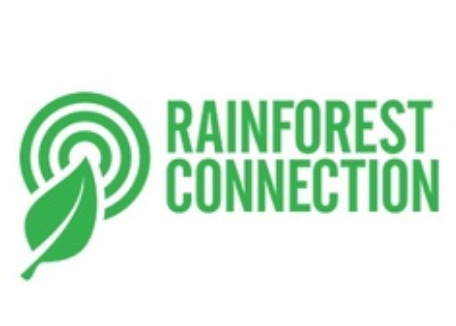 Rainforest Connection
Rainforest Connection
16 June 2022 9:15am
Passive acoustic training workshop video/materials
13 June 2022 4:03pm
New papers on marine acoustic monitoring
11 June 2022 2:36pm
Ocean Tracking Network - Telemetry Data Study Hall
8 June 2022 6:48pm



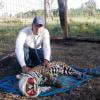


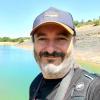
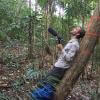





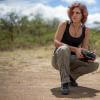



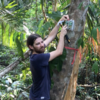




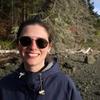
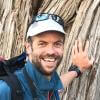








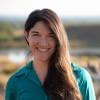

29 September 2022 4:05am